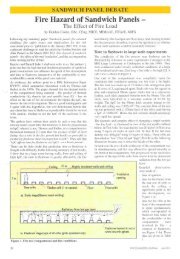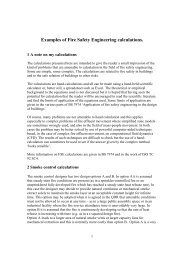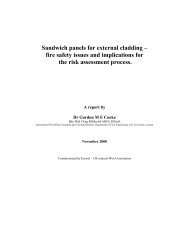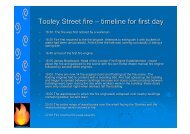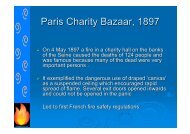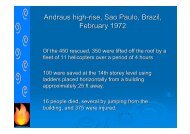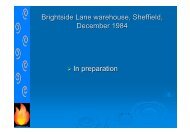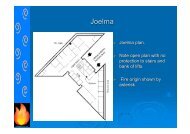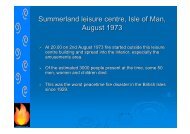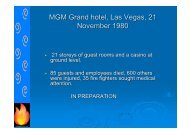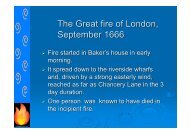Examples of Fire Safety Engineering calculations. - Cooke On Fire
Examples of Fire Safety Engineering calculations. - Cooke On Fire
Examples of Fire Safety Engineering calculations. - Cooke On Fire
Create successful ePaper yourself
Turn your PDF publications into a flip-book with our unique Google optimized e-Paper software.
We see that we can assume the ends <strong>of</strong> the studs are free to rotate and that thetemperature difference across the stud channel section is the same as in the testFrom the literature (<strong>Cooke</strong> G M E, Stability <strong>of</strong> lightweight structural sandwich panelsexposed to fire, Structures in <strong>Fire</strong> (SiF 02) Conference Proc., University <strong>of</strong> Canterbury,Christchurch, New Zealand, March 2002, or <strong>Cooke</strong> G M E, When are sandwich panelssafe in fire ?- Part 2 Avoiding collapse, <strong>Fire</strong> Engineers Journal, UK, Sept 1998, pp 25 –33):Figure. The bowing <strong>of</strong> a 6m high steel stud wall2α H ( T1− T2 )∆mid − height=8 dWhereα = coefficient <strong>of</strong> linear expansion (14x10 -6 / o C for steel at elevated temperature)H = height <strong>of</strong> member (m)T1= temperature <strong>of</strong> ‘hot’ face ( o C)T2= temperature <strong>of</strong> ‘cold’ face ( o C)d = distance between faces (m)Substituting values in the equation gives:∆− 6 214 × 10 × 6 × (700 − 300)mid −height== 0.126m8 × 0.203.2 The thermal bowing deflection at the top <strong>of</strong> a steel stud firewall4



